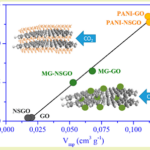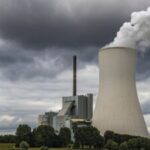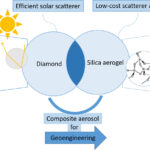October 19, 2024 Global Warming
A “climate crisis” does not exist.
Climate crisis and CO2, a false myth blindly accepted by the majority of the people

For 35 years, the United Nations’ Intergovernmental Panel on Climate Change (IPCC) has warned that emissions from burning fossil fuels, especially carbon dioxide (CO2), are causing dangerous global warming.
This is a false myth that the majority of people blindly accept.
The global warming story is not just a figment of the imagination.
It is seriously damaging Western economies.
In January 2021, the White House preposterously declared that “climate change is the most serious existential threat facing humanity.
Since then, the United States has moved from energy independence to energy dependence.
Another consequence has been the emergence of numerous companies whose goal is to “capture CO2” and “sequester carbon” from our atmosphere.
However, this so-called “solution” is scientifically impossible: life on Earth is based on carbon, and CO2 is plant food, not a pollutant.
For decades, generations have been brainwashed to believe in this phantom “climate crisis,” from kindergarten to college, from mainstream media to social media.
Young indoctrinated teachers feel comfortable teaching this false idea to students.
Dishonest climate scientists feel justified in spreading misinformation because they need government support for their salaries and “research”.
Evidence contradicting the so-called “climate apocalypse” is abundant.
Some comes from analysis of Greenland and Antarctic ice, where air trapped at various depths reveals CO2 levels from past climates.
Proxy records of marine sediments, dust (from erosion and wind deposition of sediments), and ice cores provide a record of past sea level, ice volume, seawater temperature, and global atmospheric temperatures.
The Serbian mathematician Milutin Milankovitch explained how climate is affected by variations in the Earth’s asymmetric orbit, axial tilt, and rotational oscillation, each of which goes through cycles lasting up to 120,000 years.
It is generally accepted that glacial periods of about 95,000 years, interspersed with interglacial periods of about 25,000 years, correspond to Milankovitch cycles.
Several glacial incursions occurred during the Pleistocene, an epoch that lasted from about 2.6 million to 11,700 years ago, when Earth’s last glacial period ended.
About 24,000 years ago, present-day Lake Erie was covered by ice about one kilometer thick.
Within each interglacial period, periods of warming, or “mini-summers”, occurred.
For example, within the current Holocene Interglacial, there were warmer periods known as the Minoan (1500-1200 B.C.), Roman (250 B.C.-400 A.D.), and Medieval (900-1300 A.D.).
Our modern warming period began with the end of the Little Ice Age (1300-1850).
Today’s mini-summer is colder than any mini-summer in the past 8,500 years.
How has CO2 been blamed for global warming?
French physicist Joseph Fourier (1920s) proposed that energy from sunlight should be balanced by energy radiated into space.
Irish physicist John Tyndall (1850s) conducted laboratory experiments on “greenhouse gases” (GHGs), including water vapor; he proposed that CO2 had a major effect on temperature.
However, it is impossible to do proper experiments unless the roof of the laboratory is at least six miles high.
Swedish chemist Svante Arrhenius (1896) proposed that “warming is proportional to the logarithm of the CO2 concentration”.
Columbia University biochemist Wallace Broecker (1975) and Columbia University associate professor James Hansen (1981) wrote widely cited papers in Science magazine, both of which exaggerated the danger of CO2 causing dangerous global warming without providing scientific evidence.
Most of the earth’s energy comes from the sun.
Absorption of sunlight causes the molecules of objects or surfaces to vibrate faster, raising their temperature.
This energy is then re-emitted from the land and oceans in the form of long-wave infrared radiation (heat).
Princeton University physicist Will Happer defines a greenhouse gas as one that absorbs a negligible amount of incoming sunlight but traps a substantial fraction of the heat radiation that is re-emitted from the Earth’s surface and from atmospheric greenhouse gases in space.

The gases nitrogen, oxygen, and argon – which make up 78 percent, 21 percent, and 0.93 percent of the atmosphere, respectively – have negligible absorption of thermal radiation and are therefore not greenhouse gases.
Important greenhouse gases include water (up to 7% in the humid tropics and up to 1% in cold climates), CO2 (0.042%, or 420 parts per million [ppm] by volume), methane (0.00017%), and nitrous oxide (0.0000334%, or 334 ppm).
Water vapor (clouds) has at least one hundred times the warming effect on Earth’s temperature of all other greenhouse gases combined.
As atmospheric CO2 increases, its greenhouse effect decreases : the warming effect of CO2 is 1.5°C between zero and 20 ppm, 0.3°C between 20 and 40 ppm, and 0.15°C between 40 and 60 ppm.
Each doubling of atmospheric CO2 from current levels reduces space radiation by only 1 percent.
For most of the past 800,000 years, Earth’s atmospheric CO2 has fluctuated between about 180 ppm and 320 ppm; below 150 ppm, terrestrial plants could not exist and all life would die out.
Today, the global atmospheric level is about 420 ppm.
Even at these levels, plants are “partially starved for CO2.
In fact, raising CO2 to 800-1200 ppm is standard practice for commercial greenhouse growers, increasing crop growth and yield by 20-50%.
As shown by satellite imagery since 1978, the increase in atmospheric CO2 has helped make the Earth more than 15 percent greener and has significantly increased crop production.
If global atmospheric CO2 was ~280 ppm in 1750 and ~420 ppm today, what is the source of the 140 ppm increase?
Scientists estimate that man-made industrial emissions may have contributed 135 ppm, while “natural causes” contributed the remaining 5 ppm.
In Earth’s history, the highest levels of atmospheric CO2 (6,000-9,000 ppm) occurred about 550-450 million years ago, allowing plant life to flourish.
CO2 levels in old nuclear submarines routinely operated at 7,000 ppm, while newer submarines keep it between 2,000 and 5,000 ppm.
Meanwhile, ice core data from the past 800,000 years show no correlation between global warming or cooling cycles and atmospheric CO2 levels.
CO2 in our lungs reaches 40,000-50,000 ppm, which is what causes us to take our next breath.
Each human exhales about 2.3 pounds of CO2 per day, which means that the 8 billion people on Earth produce 18.4 billion pounds of CO2 every day.
But humans account for only 1/40th of all life forms that produce CO2 on Earth.
Multiply 18.4 billion pounds by 40 and you get 736 billion pounds of CO2 per day.
This number approaches the total CO2 emitted by all the animal and fungal biomass on the planet.
Daily emissions from global industry in 2020 are estimated to be 16 million metric tons of CO2 equivalent.
If one metric ton is equal to 2,200 pounds, then “total industrial emissions” are 35,200,000,000 (35.2 billion) pounds of CO2 per day.
This means that all animal and fungal biomass (736 billion pounds) emits more than 20 times the amount of all industrial emissions (35.2 billion pounds).
Can a person with common sense understand the above facts and still create a company with idiotic projects aimed at “capturing CO2” or “capturing carbon”?
Scientifically, “net zero” and ” carbon footprint” are meaningless terms.
There is no such thing as a “climate crisis”.













